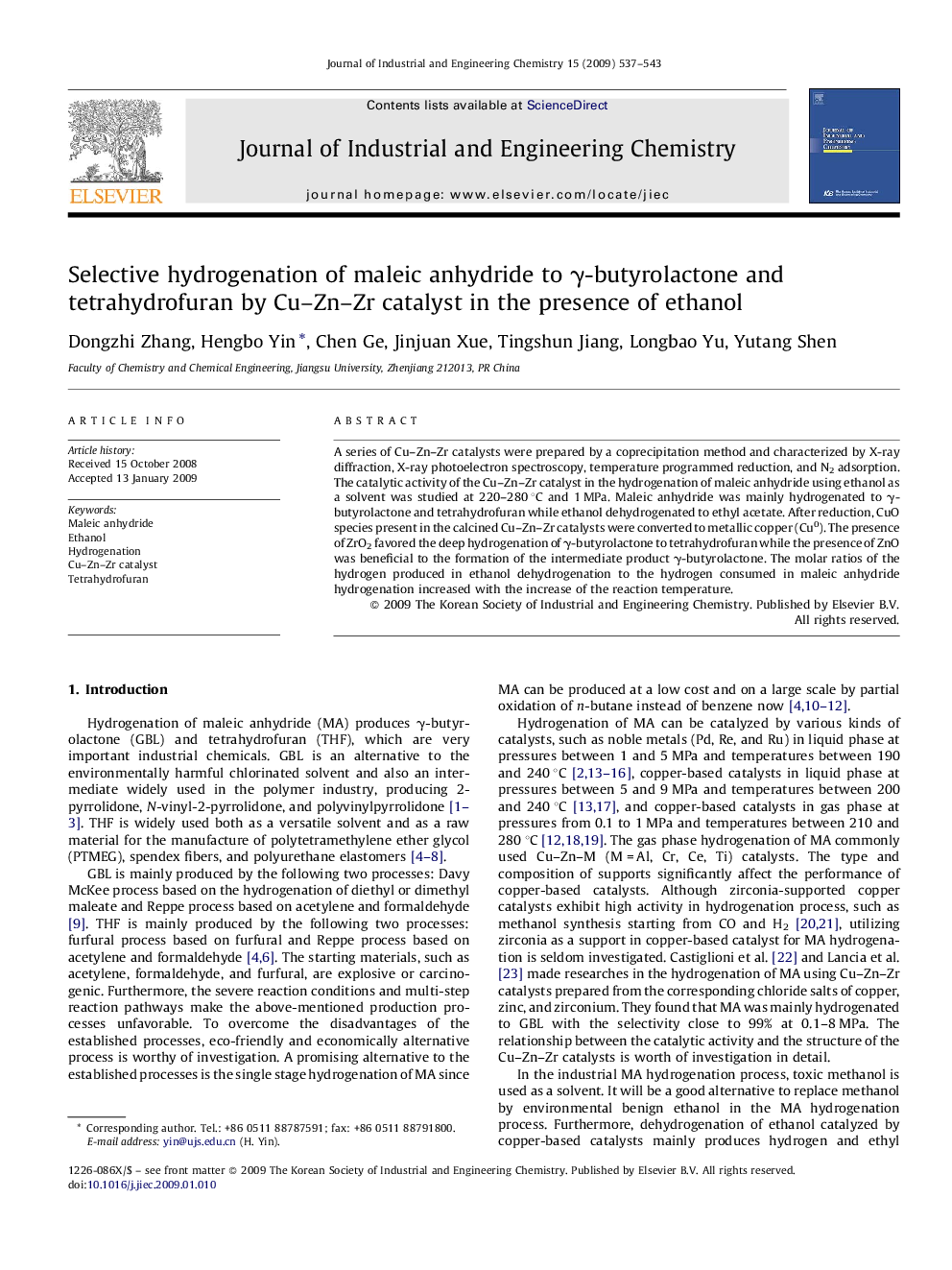| Article ID | Journal | Published Year | Pages | File Type |
|---|---|---|---|---|
| 228746 | Journal of Industrial and Engineering Chemistry | 2009 | 7 Pages |
A series of Cu–Zn–Zr catalysts were prepared by a coprecipitation method and characterized by X-ray diffraction, X-ray photoelectron spectroscopy, temperature programmed reduction, and N2 adsorption. The catalytic activity of the Cu–Zn–Zr catalyst in the hydrogenation of maleic anhydride using ethanol as a solvent was studied at 220–280 °C and 1 MPa. Maleic anhydride was mainly hydrogenated to γ-butyrolactone and tetrahydrofuran while ethanol dehydrogenated to ethyl acetate. After reduction, CuO species present in the calcined Cu–Zn–Zr catalysts were converted to metallic copper (Cu0). The presence of ZrO2 favored the deep hydrogenation of γ-butyrolactone to tetrahydrofuran while the presence of ZnO was beneficial to the formation of the intermediate product γ-butyrolactone. The molar ratios of the hydrogen produced in ethanol dehydrogenation to the hydrogen consumed in maleic anhydride hydrogenation increased with the increase of the reaction temperature.
